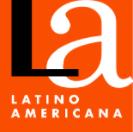The ritual of San Hugo Chávez
solidarity, effervescence and revolutionary reaffirmation
Keywords:
ritual, sacralization, Chávez, communitasAbstract
The article describes sacralization practices in relation to the image of Hugo Chavez, specifically the events that take place annually on March 5th, to commemorate the death of the Venezuelan ex-president, specially in a low income neighborhood in Caracas called “23 de Enero” located west of the Venezuelan capital. In this area of the city the residents built a chapel consecrated to Saint Hugo Chavez, this place became the epicenter of the sacred cult to this political leader. Based on the theoretical approach of Catherine Bell about ritualization practices, and Victor Turner´s notion communitas, the ceremony that took place in this chapel in March 2018 is analyzed based on ethnographic research. In this recent event its participants deny the death of this political leader, and they refer to “the sowing of the eternal and supreme commander”, which means that according to the practitioners the deep roots continue to consolidate the Bolivarian Revolution. Later on I examine how this celebration on March 5th is, at the same time, political and religious. From the cult perspective, the belief that Chavez is a superhuman figure reaffirmed the experience that he operates in the world of the living as a human figure that is remembered for his political actions as a chief of state.
References
Ammerman, Nancy (2007). Everyday religion: Observing modern religious lives. Oxford, Oxford University Press.
Bell, Catherine (1992). Ritual theory, ritual practice. Oxford, Oxford University Press.
Blázquez, Gustavo. (2011). “Hacer belleza: género, raza y clase en la noche de la ciudad de Córdoba”, Astrolabio (6), pp. 127-157.
Brown, Peter (1982). The cult of the saints. Chicago, University of Chicago.
Cannell, Fenella. (2007). “How does ritual matter?”, Questions of Anthropology (pp. 105-136). Oxford-New York: Berg.
Carozzi, María (2003). “Carlos Gardel, el patrimonio que sonríe”, Horizontes Antropológicos, 9 (20), pp. 59-82.
Carozzi, María (2004). “Rituales en el horario central: sacralizando a Gardel en los homenajes televisivos”, Ciencias Sociales y religión. 6, (6), pp. 11-29.
Da Matta, Roberto (1979). Carnavais, malandros e heróis: para uma sociologia do dilema brasileiro. Rio de Janeiro, Zahar Editores.
Deleuze , Gilles & Guattari Félix (1980). Mil Mesetas. Barcelona, Pre-Textos.
Durkheim, Émile (1982). Las formas elementales de la vida religiosa. Madrid, Akal.
Flores Martos, Juan (2014). “Iconografías emergentes y muertes patrimonializadas en América Latina: Santa Muerte, muertos milagrosos y muertos adoptados”, AIBR Revista de Antropología Iberoamericana, 9 (2), pp. 115-140.
Franco, Francisco (2011). “El culto de los muertos milagrosos en Venezuela: ¿santos, espíritus o héroes?”, Márgenes, 9, pp. 25-34.
Frigerio, Alejandro (2018). “¿Por qué no podemos ver la diversidad religiosa?: Cuestionando el paradigma católico-céntrico en el estudio de la religión en Latinoamérica”, Cultura y representaciones sociales, 12, (24), pp. 51-95.
Hernández, Luis (2018). “El culto a Hugo Chávez en Venezuela: ¿santo, ser vergatario o muerto poderoso?”, Ciencias Sociais e Religião. 20. (28), pp. 114-128.
Kertzer, David (1988). Ritual, Politics and Power. New Haven, Yale University Press.
Martín, Eloísa (2007) “Gilda, el ángel de la cumbia”, Religiao e sociedade. 27 (2), pp. 30-54.
Menezes, Renata. (2009) “San Antonio de Rio de Janeiro: dimensiones de la santidad y devoción”, Catolicismo Plural. Dinámicas contemporáneas (pp. 109-133). Renata Menezes (Compiladora). Rio de Janeiro: Vozes.
Orsi, Robert. (2005). Between Heaven and Earth: The religious worlds people make and the scholars who study them. Princeton, Princeton University Press.
Peirano, Martiza (2006) “Temas ou teorías? O estatuto das noções de ritual e de performance”, Campos. Revista de Antropología 7 (2), pp. 9-16.
Plotkin, Mariano (1995). “Rituales Políticos, Imágenes Y Carisma: La Celebración del 17 de octubre y el Imaginario Peronista 1945-1950”, Anuario del IEHS, VIII, pp. 153-174.
Taussig, Michael (2015) [1997). La magia del Estado. Ciudad de México: Siglo XXI Editores.
Turner, Victor. (1974). Dramas, fields, and metaphors. New York, Cornell University Press.
Tweed, Thomas. (2015). “After the quoditian turn: Interpretive categories and scholarly trajectories in the study of religion since 1960s”, The Journal of Religion 95(3), pp. 361-385.
























